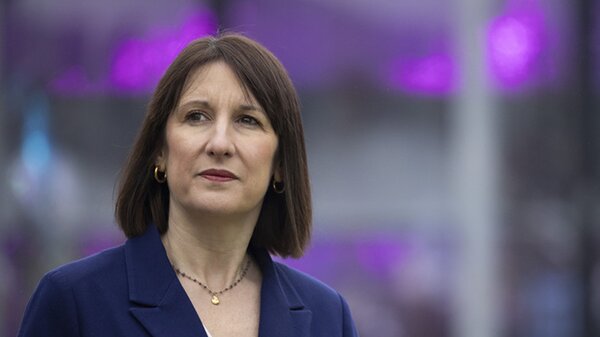
In a significant move towards modernizing the UK's tax system, HM Revenue and Customs (HMRC) is set to implement the Making Tax Digital (MTD) initiative, mandating digital tax reporting for certain taxpayers.
Starting from April 6, 2026, sole traders and landlords with a gross income exceeding £50,000 will be required to maintain digital records and submit quarterly updates on their income and expenses using MTD-compatible software . This initiative aims to streamline tax reporting, reduce errors, and provide a more real-time overview of taxpayers' financial positions.
Timeline and Thresholds for MTD Implementation
Making Tax Digital for Income Tax Self-Assessment (MTD for ITSA) is being rolled out in stages, so you’ve got time to get prepped. From 6 April 2026, it’ll be mandatory for individuals with a gross income of over £50,000 from self-employment or property.
A year later, on 6 April 2027, the threshold drops to £30,000. And by 6 April 2028, it comes down again to £20,000. HMRC will use your Self Assessment tax return to figure out if you’re in scope and will get in touch if you’re affected. Just so we’re clear: gross income means your total income before any deductions or allowances.
So if you’re hovering around the thresholds, it’s worth checking where you stand. The phased approach means there's time to prepare, and we’re here to help you every step of the way.
Objectives Behind the Digital Transition
Making Tax Digital isn’t just about moving things online for the sake of it there’s a clear purpose behind the shift. At its heart, the MTD initiative is designed to improve accuracy, reduce errors in tax calculations, and make sure digital records do the heavy lifting.
It also introduces real-time reporting, helping taxpayers get a clearer, more up-to-date view of what they owe and when. The overall aim? To make the whole tax process more efficient, saving time for both individuals and HMRC.
As James Murray MP, Exchequer Secretary to the Treasury, put it, “MTD for Income Tax is an essential part of our plan to transform the UK’s tax system into one that supports economic growth.” For taxpayers, that means less faff, fewer mistakes, and more control over your finances which sounds like a win to us.
Preparations and Support for Taxpayers
To help make the switch to Making Tax Digital as smooth as possible, HMRC is encouraging eligible taxpayers to take a few simple steps. First up, they’re inviting people to join the MTD testing programme, a great way to get familiar with the new system before it becomes mandatory. They’re also offering plenty of support, including guidance from the MTD Customer Support Team, to help answer questions and ease the transition.
Crucially, taxpayers should make sure they’re using HMRC approved digital tools that are compatible with MTD for keeping records and submitting updates. As Craig Ogilvie, HMRC’s Director of Making Tax Digital, has highlighted, this shift is all about helping people get ahead and feel confident in managing their tax digitally.

Challenges and Concerns
While Making Tax Digital promises plenty of benefits, it’s not without its bumps in the road. A recent survey found that 45% of UK sole traders feel unprepared for the upcoming changes, with 76% saying there’s a real need for better awareness.
On top of that, the shift to digital comes with a price tag, it’s estimated that VAT-registered businesses have faced around £300 million in administrative costs between 2019–20 and 2023–24 to get systems in place.
And it’s not just individual taxpayers feeling the strain. Some tax agents and intermediaries have voiced concerns that the development of digital services hasn’t fully considered their specific needs. It’s a reminder that support, communication and simplicity will be key to making this transition a success for everyone.


Fun Fact
The UK's tax reporting system has undergone significant transformations over the years. The introduction of Self Assessment in 1997 marked a shift towards taxpayers taking responsibility for reporting their income.
Now, with the MTD initiative, the UK is embracing digitalization to further streamline the process. This evolution reflects a broader global trend of leveraging technology to enhance tax administration and compliance.
Conclusion
The Making Tax Digital initiative represents a significant step towards modernizing the UK's tax system. By mandating digital record-keeping and quarterly reporting for high earners, HMRC aims to enhance accuracy, efficiency, and real-time understanding of tax obligations.
While the transition poses challenges, including awareness and administrative costs, the long-term benefits of a streamlined, digital tax system are poised to outweigh the initial hurdles. Taxpayers are encouraged to prepare proactively, leveraging available resources and support to ensure compliance and ease during this transition
Frequently Asked Questions
What is Making Tax Digital (MTD)?
MTD is an HMRC initiative requiring certain taxpayers to maintain digital records and submit quarterly updates on their income and expenses using compatible software.
Who will be affected by MTD for Income Tax?
Initially, sole traders and landlords with gross income over £50,000 will be affected from April 6, 2026.The threshold will lower to £30,000 in April 2027 and £20,000 in April 2028.
How can I prepare for MTD?
Taxpayers should participate in HMRC's testing program, seek guidance from the MTD Customer Support Team, and adopt HMRC-approved digital tools for record-keeping and submissions.
Will MTD replace the annual Self Assessment tax return?
No, the annual Self Assessment tax return will remain in place to finalize the year's tax position, in addition to the quarterly updates required under MTD.
Are there any exemptions to MTD?
Yes, certain individuals may be exempt from MTD if it's not reasonable or practical for them to use digital tools.HMRC will provide guidance on applying for exemptions.











